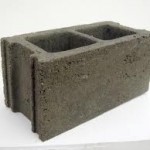Earlier this fall, I was privileged enough to attend a tasting of all sake made by Honda Shoten, brewers of Tatsuriki sake in Hyogo. For these guys, it is all about the rice, as well it should be. They are right in the backyard of perhaps the best rice fields in Japan, and have access to obscenely good Yamada Nishiki, but also to outstanding Omachi, Shinriki and other rice varieties. Some of their better sake can get a bit pricey but are worth it for those that understand what great rice is all about.
 The mid-sized room encompassed long tables paralleling the walls in a concentric rectangle, with sake spaced evenly around all four lengths. The most expensive sake sat closest to the door, and in spite of it being labeled numbers one to five, I resisted the urge to dive in there, feeling it somehow disrespectful to the sake itself, inanimate though it now was. I passed it by, intending to return after warming up my palate, a promise to myself I later kept.
The mid-sized room encompassed long tables paralleling the walls in a concentric rectangle, with sake spaced evenly around all four lengths. The most expensive sake sat closest to the door, and in spite of it being labeled numbers one to five, I resisted the urge to dive in there, feeling it somehow disrespectful to the sake itself, inanimate though it now was. I passed it by, intending to return after warming up my palate, a promise to myself I later kept.
In the back right corner sat a half dozen sake, all of them tokubetsu junmai, all made with a different rice. Yamada Nishiki. Omachi. Shinriki. Yamadaho. Gohyakumangoku. They were lined up next to each other, offering a rare and outstanding comparison of great rice, with more flavor intact than might be with a higher grade than these tokubetsu junmai. The exercise was as educational and gratifying as I had mentally billed it to be, and I moved on. After another half-round of the room, directly opposite the comparative tasting just described, I came to the same sake lined up again – but this time, they were nama. In other words, unpasteurized.
As most readers surely recall, almost all sake has been pasteurized twice – once after pressing on its way to the maturation tank, and once again on the way from that to the bottle. There are a handful of variations to this pattern, and amongst those of course is totally unpasteurized sake, i.e. nama-zake.
Certainly nama-zake has its appeal. But I have long held that most of the time, sake that has been properly (read: gently, just enough to provide stability) pasteurized offers more depth by virtue of eliminating a veil-like set of characteristic aromas and flavors. The key phrase here is “most of the time.” There is plenty of very delicious nama-zake out there, much of it deep and complex. And while nama is not inherently better than its pasteurized counterpart, it is almost always very enjoyable provided it has been cared for properly, i.e. kept cold. Still, most of the time, I prefer sake in which I can perceive depth of flavor and aromas, and that more often than not means pasteurized sake.
 And here was an exemplar case of why I feel that way. The nama-zake made from the different rice types had about as much subtlety as a set of cinder blocks. They were very tasty cinder blocks, mind you! All five of them were delicious. But they were big, they were bold, and they were dense. Amidst that stone-like opacity, I could not even begin to see the differences or typical characteristics of the individual rice types, at least not nearly as well as I had just a handful of bottles previous.
And here was an exemplar case of why I feel that way. The nama-zake made from the different rice types had about as much subtlety as a set of cinder blocks. They were very tasty cinder blocks, mind you! All five of them were delicious. But they were big, they were bold, and they were dense. Amidst that stone-like opacity, I could not even begin to see the differences or typical characteristics of the individual rice types, at least not nearly as well as I had just a handful of bottles previous.
All I could say was, “Yup; it’s nama.” Don’t get me wrong; it was good! But all subtleties of rice difference were lost in the nama-ness affront on my palate.
 This is not intended as a disparaging rant on nama-zake; not at all! It can be wonderful, indeed. Just remember it is not unequivocally better, and that from time to time, some subtleness and depth might be the price for enjoying its fresh, lissome youth. This is a matter of personal opinion, of course, so by all means taste enough to form your own.
This is not intended as a disparaging rant on nama-zake; not at all! It can be wonderful, indeed. Just remember it is not unequivocally better, and that from time to time, some subtleness and depth might be the price for enjoying its fresh, lissome youth. This is a matter of personal opinion, of course, so by all means taste enough to form your own.




